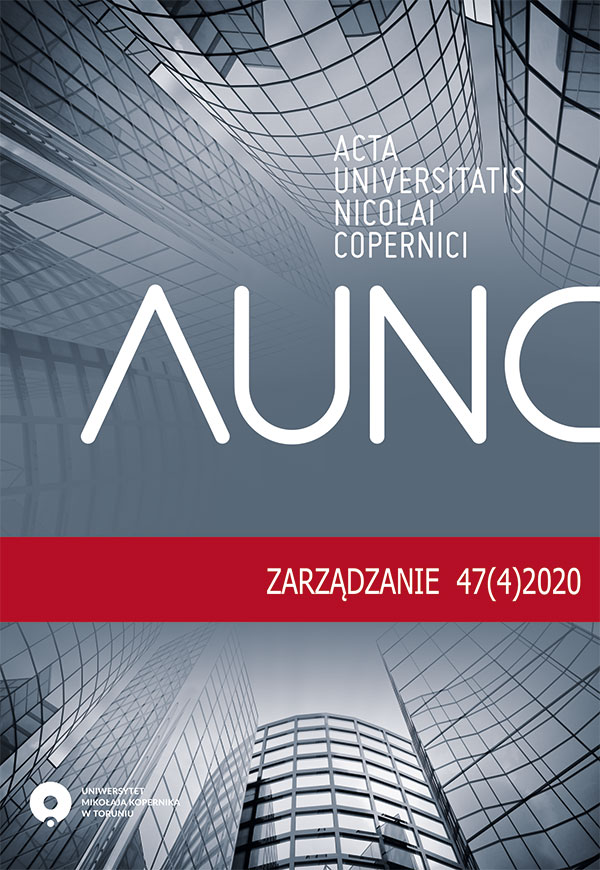Budowanie marki w sektorze dóbr luksusowych: Strategia, wyzwania i perspektywy rozwoju
DOI:
https://doi.org/10.12775/AUNC_ZARZ.2021.02.006Słowa kluczowe
marka, dobra luksusowe, strategia marki, zrównoważony rozwój, cyfryzacjaAbstrakt
Artykuł analizuje proces budowania marki w sektorze dóbr luksusowych, uwzględniając kluczowe elementy, takie jak tradycja, innowacyjność oraz zrównoważony rozwój. W opracowaniu omówiono ewolucję strategii marek luksusowych, ich współczesne wyzwania oraz perspektywy rozwoju. Podkreślono znaczenie storytellingu, personalizacji oraz technologii cyfrowych w budowaniu wizerunku i relacji z klientami. Na podstawie analizy treści publikowanych przez marki luksusowe na portalach społecznościowych w 2020 roku ukazano, jak platformy takie jak Instagram i Facebook wspierają komunikację z konsumentami, wzmacniając wartości marek i budując ich autentyczność. W artykule wskazano, że przyszłość marek luksusowych będzie zależała od umiejętnego łączenia tradycyjnych wartości z innowacyjnymi strategiami, takimi jak zrównoważony rozwój, cyfryzacja i globalizacja.
Bibliografia
Bastien, W., Kapferer, J.N., More on Luxury Anti-Laws of Marketing, [in:] K.P. Wiedmann, N. Hennings (Eds.), Luxury Markting. A Chellenge for Theory and Practice, Springer Gabler, Wiesbaden, 2013.
Beverland, M. (2004). Uncovering “theories-in-use”: Building luxury wine brands. European Journal of Marketing, 38(3/4).
Boisvert, J., Ashill, N. (2018) The spillover effect of downward line exteinsions on U.S. consumers` evaluation of a French luxury parent band: The role of branding strategies , authenticity and fit, Psychology & Marketing, 35(10).
De Klerk, H., Kearns, M., Redwood, M. (2019). Controversial fashion, ethical concerns and environmentally significant behaviour: The case of the leather industry. International Journal of Retail & Distribution Management, 47(1).
Dolińska-Weryńska, D. (2015), Branding emocjonalny w zarządzaniu wartością marki, Zeszyty Naukowe Politechniki Śląskiej, Seria Organizacja i Zarządzanie, 85(1943).
Donze, P.Y., Wubs, B. (2019). Storytelling and the making of a global luxury fashion brand: Christian Dior. International Journal of Fashion Studies, volume 6/1, 83-102.
Fionda, A., Moore, C. (2009). The anatomy of the luxury fashion brand. Journal of Brand Management, 16(5-6).
Hung, K.P., Chen, A., Peng, M., Hackley, Ch., Tiwsakul, R., Chou, Ch. (2011) Antecedents of luxury brand purchase intention, Journal of Product & Brand Management 20/6, 457-467.
Kent, S. (2018). Gucci, Prada Join Fur-Free Luxury Club. Business of Fashion. Retrieved from https://www.businessoffashion.com.
Kumar, V., Christodoulopoulou, A. (2014), Sustainability and branding: An integrated perspective, Industrial Marketing Management, 43(1).
Liczmańska, K., (2008). Silna marka jako źródło przewagi konkurencyjnej w momencie zakupu. Roczniki Ekonomiczne Kujawsko-Pomorskiej Szkoły Wyższej, nr 1, 87-99.
Liczmańska K., (2010) Efekt kraju pochodzenia produktu a decyzje nabywcze konsumentów sektora alkoholi wysokoprocentowych, Roczniki Ekonomiczne Kujawsko-Pomorskiej Szkoły Wyższej w Bydgoszczy, nr 3.
Liczmańska, K. (2015). Kluczowe czynniki determinujące zachowania konsumenckie na przykładzie mieszkańców województwa kujawsko-pomorskiego. Zeszyty Naukowe Uniwersytetu Szczecińskiego, Problemy Zarządzania, Finansów i Marketingu, 41(2).
Liczmańska, K., (2016). Strategie produktowe marek na rynku FMCG. Wydawnictwo Naukowe Uniwersytetu Mikołaja Kopernika w Toruniu, Toruń.
Liczmańska-Kopcewicz K., Wiśniewska A., (2019). The Importance with Customers for Innovative Results of Enterprises in the FMCG Sector – the Perspective of the Industry 4.0 Concept. Proceedings of the 34rd International Business Information Management Association Conference, IBIMA 2019: Vison 2025: Education Excellence and Management of Innovations through Sustainable Economic Competitive Advantage, International Business Information Management Association, 13325-13338.
Moore, C., Birtwistle, G. (2005). The Burberry Business Model: Creating an International Luxury Fashion Brand. International Journal of Retail & Distribution Management, 33(8).
Phan, M., Thomas, R., Heine, K. (2011). Social Media and Luxury Brand Management: The Case of Burberry. Journal of Global Fashion Marketing, 2(4).
Pookulangara, S., Shephard, A. (2013). Slow fashion movement: Understanding consumer perceptions—An exploratory study. Journal of Retailing and Consumer Services, 20(2).
Skrzypek, E., Pinzaru, F. (2017). Marka jako ważny element marketingu, Zeszyty Naukowe Uniwersytetu Przyrodniczo-Humanistycznego w Siedlcach. Seria: Administracja i Zarządzanie, Uniwersytet Przyrodniczo-Humanistyczny (Siedlce), 41(114).
Staker, K.,, Wrigley, C. (2016) Emotionally engaging customers in the digital age: the case study of ‘Burberry love’, Journal of Fashion Marketing and Management, 20(3).
Wiśniewska A., (2012). Mechanizm oddziaływania wizerunku marki na zachowania konsumentów, Acta Universitatis Nicolai Copernici, Zarządzanie, vol. 39. (407), 187-196.
Wiśniewska A., (2014). Strategia lojalności konsumentów, Acta Universitatis Nicolai Copernici, Zarządzanie, vol. 1, 39-52.
Wiśniewska, A., Dudko, M., (2016). Budowa programów lojalnościowych, Acta Universitatis Nicolai Copernici, Zarządzanie, vol. 1, 9-24.
Pobrania
Opublikowane
Jak cytować
Numer
Dział
Licencja

Utwór dostępny jest na licencji Creative Commons Uznanie autorstwa – Bez utworów zależnych 4.0 Międzynarodowe.
Statystyki
Liczba wyświetleń i pobrań: 340
Liczba cytowań: 0







